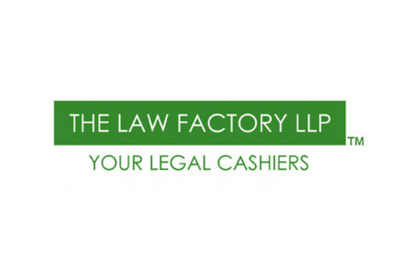As we all know, up until November 2024 there had been no significant increases to legal aid rates since 1996. Who would have thought after 3-6 years of immense hard work in qualifying as a solicitor, that up until recently, you would be receiving the same remuneration that you would have received 28 years ago.
It is actually a whole lot worse that that! While the income in legally aided law firms has remained the same, costs have increased significantly squeezing profit margins… so much so that you might not have even remained sustainable.
Over the course of the last 28 years this has led to two things:
- Less qualified solicitors choosing to run legally aided law firms
- An increase in legally aided firms linking up with charities to support income streams
Having worked a lot recently in a hybrid legally aided charity structure, point 2 resonates a lot with myself and The Law Factory.
Effect on VAT for legally aided charities
In a legally aided law firm with no charity connection, we can reclaim 100% of our input VAT on purchases, provided we are VAT registered.
In a legally aided charity structure, the full VAT input amount can ONLY be reclaimed if the purchase is directly related to a taxable business activity. In the case of a legally aided charity structure, this would be the provision of legal services to clients. An example purchase would be case management software used by the legal team.
When the benefit of the purchase is split between both business and non-business activities for VAT, the VAT input will need to be apportioned. Non-business activities being the activities undertaken by the charity therefore outside the scope for VAT
Acceptable VAT recovery methods to calculate apportionment:
- Income split (typically most common)
- Floor space
- Time
- Cost centres
- Headcount
Which VAT apportionment method to use?
There is only one requirement for selecting an appropriate recovery method, and that is that the method used is ‘fair and reasonable’. It is best advised to agree a method with HMRC, in particular for more complex charity structures with diverse income streams.
Are there recovery methods that will yield a better VAT input recovery?
Yes! As indicated above the most common method is an income split calculation, however some of the other methods are likely to yield a higher recovery rate on VAT reclaims
Example: A legally aided charity has turnover of £1,000,000, £250,000 of turnover coming from legal aid billing and £750,000 through charitable activities (grants, donations etc). Our VAT recovery rate here would be 25% business activities, 75% non-business using an income method. (Recovery rate A)
The same legally aided charity has 10 employees working directly on legal aid billing (business activity) and 10 employees working directly on charitable activities (non-business activity). Our VAT recovery rate under this different method would be 50% business activities, 50% non-business activities using a headcount method. (Recovery rate B)
The legally aided charity per VAT quarter on average spends £120,000 on services and supplies that have a crossover benefit on both business related activities and non-business related activities. The most common examples are – accountancy & bookkeeping fees, telephone & internet, rental costs and many more.
Using the £120,000 expenditure above, this will contain £20,000 of reclaimable input VAT assuming all purchases are vatable.
Recovery method A (income) – £5,000 would be reclaimed on our quarterly VAT return, 25% of the £20,000 in VAT
Recovery method B (Headcount) - £10,000 would be reclaimed on our quarterly VAT return, 50% of the £20,000 in VAT
Is it ‘fair and reasonable’ to go with recovery method B?
Using the information in the above scenario, I would say this would be considered ‘fair and reasonable’. My rationale for this is that there is a 50/50 split between staff working on business related activities and non-business related activities, therefore it is a fair assumption to assume that the mixed supplies will benefit the activities in the same 50/50 manner.
Why would recovery method B be advantageous?
- Using the above calculation, you can see there is a greater VAT recovery in method B. This carries a direct cashflow benefit. The bigger the charity the more this will benefit.
- As we alluded to earlier in the article, legal aid rates have been so low for the amount of work undertaken that we are unlikely to get a ‘fair and reasonable’ recovery rate using an income based method.
It may well be that there are other methods more appropriate to your charity structure that are fair and reasonable providing a similar benefit.
Conclusion
It might be time if you are a legally aided charity to review your VAT recovery method and make sure you are using the most appropriate for your structure
If you are not a legally aided charity but just a legal aid firm, a lot of the above article will not apply to you. However, congratulations on surviving the poor rates over the last 28 years.
The Law Factory have a long history of working with legal aided firms so if you are looking for an outsourced accounts supplier, we have a extensive experience in this area of law.







